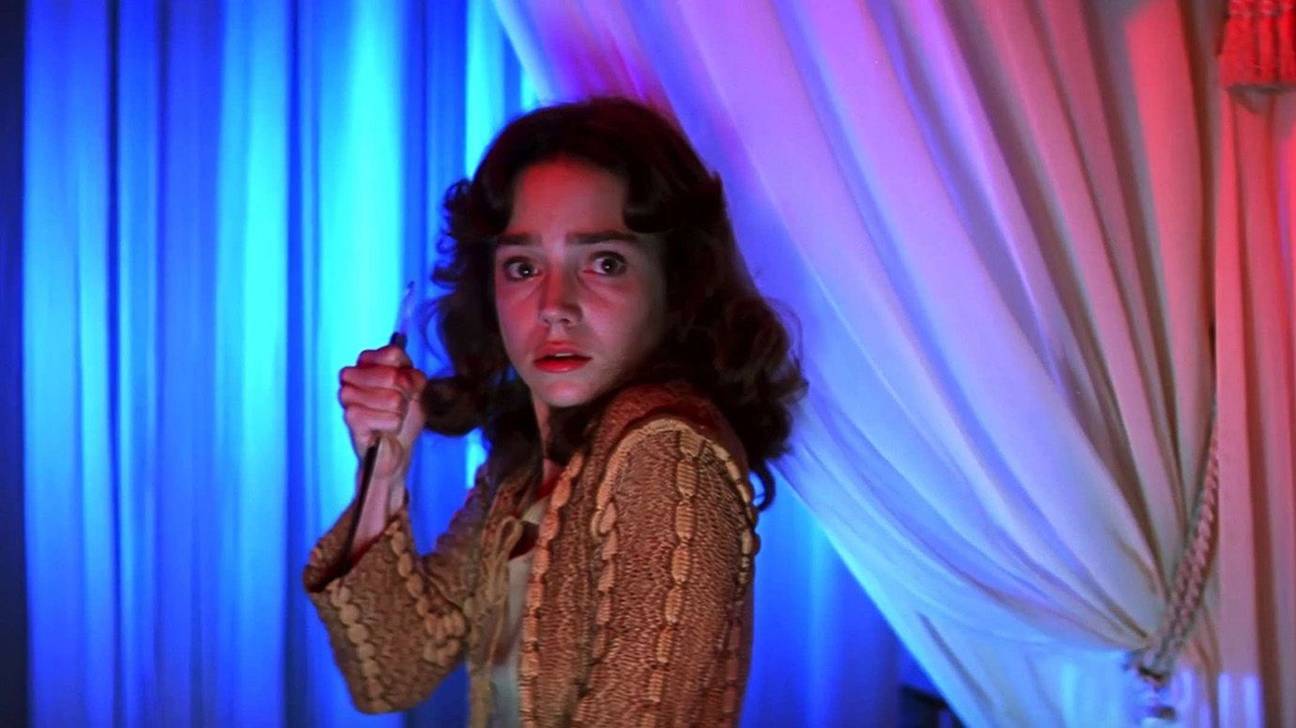Does Luca Guadagnino's Suspiria pale in comparison to Dario Argento's Suspiria? Some comparison is legitimate. And you'll get the chance to see just how legitimate. Thanks to a new screening concept at Cinematek you'll be able to compare the two in great detail.

Restored or disturbed?
Luca Guadagnino cordially requests that we do not refer to a remake of Suspiria but to a “cover”. The director of Io sono l’amore and Call Me by Your Name has a point. He does not mimic the original film by Dario Argento. That would in any case be very difficult.
The Suspiria film from 1977 did not go down in history because of its story about an American ballerina (Jessica Harper) who never suspects that witches are responsible for the bizarre murders at her German ballet school. It is purely thanks to the film’s cinematic qualities of the terrifying giallo that have made audiences shiver with delight for the past 41 years: the interplay between expressionistic camera angles, the frenzied décor, the crazy soundtrack by Goblin, the faces twisted with fear, the psychedelic use of red and blue, the addictively sinister atmosphere that sometimes descends into surrealism, and the unashamedly baroque violence.
Guadagnino is likewise a stylist, but he is far less wild and interiorizes the link between dance and witchcraft, as the Brussels choreographer Damien Jalet indicates. “Luca wanted to extend that theme beyond the original,” Jalet says. “Another big difference is that his Suspiria is not set in a ballet school in the Black Forest but in a dance company in West Berlin in 1977, a politically tumultuous period, and the year that Argento’s original Suspiria was released. You can hear the uproar around the Red Army Faction and the imprisonment of Ulrike Meinhof and Andreas Baader on the background. That context enhances the metaphor of a secret society.”
4K restoration
You can easily compare the two versions of Suspiria because Cinematek is screening Dario Argento’s film at the end of this month as part of a new initiative that has been entitled Restored. The idea is not to delve into their own collection but to screen a series of films that have recently been restored, not necessarily by Cinematek itself, even though the Belgian institution is world-famous for its film restoration.
Screenings are essential. Restoration is not enough to keep a film alive. Films only exist when somebody watches them. The first edition of Restored aims to introduce films like Ingmar Bergman’s The Silence, Louis Feuillade’s Les vampires, Rainer Werner Fassbinder’s Die Ehe der Maria Braun, and Nicolas Winding Refn’s Bleeder to new audiences. For films like the occult Suspiria, restoration and projection on a cinema screen is a godsend. The 4K restoration shows the bloody violence and blinding cinematographic brilliance in all its gory detail and glory.
Restored: 19 > 30/11 (Suspiria: 30/11), Cinematek, www.cinematek.be
Lees meer over: Film
Fijn dat je wil reageren. Wie reageert, gaat akkoord met onze huisregels. Hoe reageren via Disqus? Een woordje uitleg.